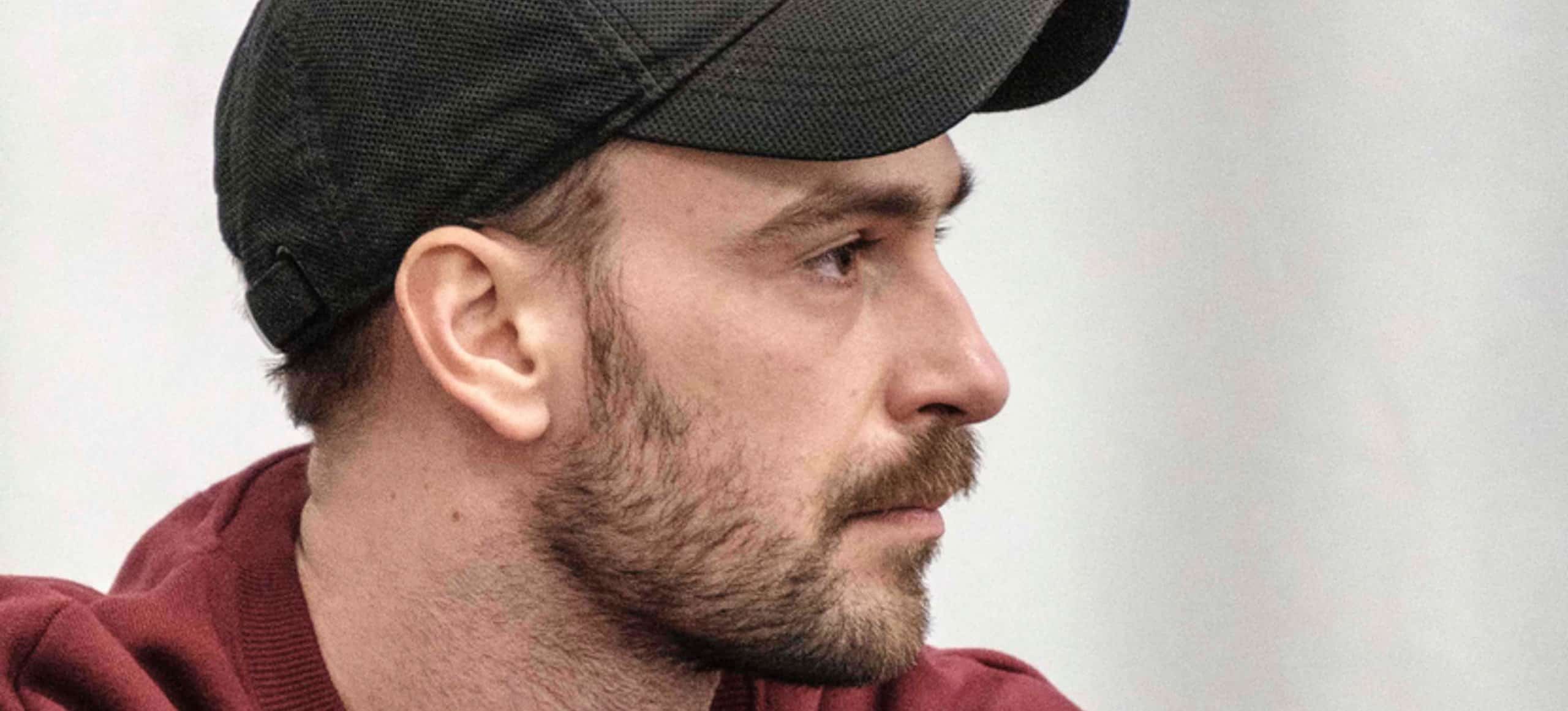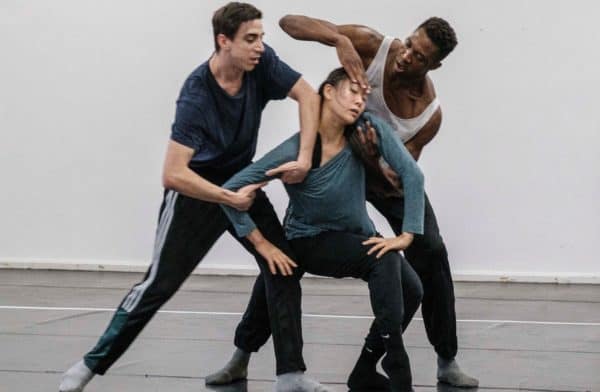
TO PLAY WITH ONE’S (OWN) PERCEPTION
SHIFTING PERSPECTIVE – DIEGO TORTELLI IN CONVERSATION WITH HIS AUDIENCE
In his new dance piece Shifting Perspective, which premiered on February 28, 2019, at Muffathalle in Munich, Diego Tortelli speaks about how deeply today’s communication processes are determined by the media, by rapid change, by moments of distance and intimacy between people. The audience is invited to assume difference perspectives throughout the live performance, and to play with its own habits of perception. Julia Opitz met the choreographer after a showing a week before the premiere to talk about the piece.
JULIA OPITZ: Hello Diego. What is the title Shifting Perspective all about, what’s hidden behind it?
DIEGO TORTELLI: Because my piece addresses a particularly young audience, I asked myself what determines a young person’s attitude towards life today. Is it something that I may no longer be able to do and that I could be jealous of? I thought about things like imagination, indulgence, creativity, a carefree life, and above all thought about the fact that young people are often not yet pinned down: they ignore rules, change their points of view, and can more easily assume different perspectives. I found these phenomena and their way of communicating very intriguing.
JO: How did you proceed once you had decided upon the topic? What did your research look like?
DT: I did a lot of research online, on social media platforms. When we began with our second rehearsal phase, we also created our own Instagram
account, @yourownperspective, in order to make different work stages of our rehearsal process visible. We in addition used the account to ask young people about their experience with dance, about their favorite music and about unforgettable moments in their lives. We wanted to learn more about how they select the images they post, and what role light and color play for the composition of an image. It was important to us to invite them to participate in the process of developing the piece and to share their associations, thoughts, and photographic language with us. Because I followed their posts, I was able to capture a very specific atmosphere. We consciously decided that we did not simply want to create a piece ‘about them,’ the ‘teenagers,’ but instead sought to create something inspired by them. Through this approach, and also through conversations I had with my nephew, who is sixteen, I was inspired to produce stage material that would enable me to generate, together with my dancers, a physicality, a formal language that describes rapidly transforming phenomena and processes of change. This research was equally crucial to Francesco and his composition process. It was an approach that was unusual for me and thus also changed my perspective on my own work – and that is something that meaningful on a very personal level.
JO: How did you come up with your (choreographic) material? Did your approach differ from other previous work methods?
DT: Over the last five years, I have sort of developed a unique choreographic language, which my pieces are based on. Although my works are conceptually very diverse, there is always a specific repertoire of movement, which I use again and again and which I of course adapt in order to speak about different things and conditions. Shifting Perspective differs from earlier works in that most of the material was shaped in a collective creative process with the dancers, Jin Young Won, Cristian Cucco, Corey Scott-Gilbert, and with our composer Francesco Sacco. When trying to find the right material we focused on the ways in which bodies can bend one way or another in order to highlight its ‘changing perspectives.’ You could compare this method to geometric objects, which you observe from various points of view and thus perceive in different ways. At the same time, I was also interested in the interplay between ‘inner’ and ‘outer’ movement as a form of changing perspectives. Jin Young, for instance, uses emotion to set her body in motion from within, something that becomes visible through her eyes. This method creates very intimate and poetic images. I am therefore on the one hand concerned with the creation of geometric lines of connection that run through the body, in a similar way as in architectural works, and on the other hand want to make the emotional, the ‘internal’ of the body visible through movement. The dancers, oscillating between both of these modes, create their own energy levels. Sometimes all three dancers barely look at one another and are nevertheless connected through their bodies – this situation resembles moments of intimacy and distance that are today established whenever we communicate through modern media: we are connected to and at the same time closed off from one another. And that is precisely what we want to show and what we found a body language for, one that is not only constituted of different approaches, but is, for that reason alone, also very energetic.

JO: You already briefly mentioned the musical dimension – how did Francesco Sacco take up the changing perspectives for his compositions? How do movement and music play into one another?
DT: For Shifting Perspective Francesco, whom I am already working with for the fourth time, composed mostly based on rhythm and developed an interactive sound installation. We wanted to restore music’s spontaneous power by enabling the audience, who is equipped with headphones at the beginning of the show, to change back and forth between three different tracks, one language and two music channels. A forth track, which can permanently be heard throughout the space, functions as its base. This creates a particular sensuous experience: while everyone in the audience wears headphones, their bodies still absorb the vibration in the room so that they can perceive different layers of sound. Essentially, the audience members can individually decide when and for how long they want to listen to which track – while the music in the room remains a given. This tension was very interesting to us artistically. At the same time, we wanted to enable the audience to design their own musical ‘dramaturgy’ during the live performance.
JO: By consciously letting the audience make some of the decisions, you automatically lose a certain amount of control. Everyone appears to be free in the theatre space that you create. Is that the case? Is the audience really free?
DT: From the onset we had the idea to take away the choreographer’s, meaning my power and develop something that is not solely concerned with its conceptual intent or clear dramaturgy. We wanted to enable the (young) audience to choose, and to give them the impression that they could decide individually. In addition to the headphones and the different music channels I designed a stage that functions like a platform or pedestal in the room. The dancers act on it and can be watched from all sides – from a 360-degree angle. Through the different spatial and musical perspectives that the audience can move back and forth between I no longer predefine what they ‘should’ feel. They are constantly confronted with their own perception and can play with it. And that is why they are, indeed, in a way free, hopefully.

JO: What role did your team play in this collective work process?
DT: I was lucky to work with three fantastic dancers whom I absolutely trust. I already knew all of them before we started rehearsing. They helped to shape the creative process together with Francesco. As a group we developed the skill to discuss the piece on equal terms. Jin Young, Cristian, and Corey had different ways of approaching the task, but were nevertheless always able to recognize and comprehend one another’s perspective. Through this very personal process they have created unpredictable energies and images. I have to feel comfortable around my dancers, my head of production, my light and sound designers. For Shifting Perspective, I could create the material together with everyone and all of sudden it was no longer just I who was responsible for the piece. This collective work process was new for me; it was perhaps my very personal change of perspective – a very special experience that can only happen in a team where people trust each other. For Shifting Perspective, I was inspired by a young audience, but just as much by three wonderful performers and an unforgettable team in the background. I am very happy to have had this doubly precious experience.
JO: Thank you for this talk!
Choreography: Diego Tortelli & dancers _ Composition: Francesco Sacco _ Dance: Jin Young Won, Cristian Cucco, Corey Scott-Gilbert _ Head of production: Miria Wurm / Tanzbüro München Technical direction, light design: Roman Fliegel _ Sound design, Audio Recording: Josy Friebel Mentoring: Amelie Mallmann _ PR: Pfau PR, Christiane Pfau _ Production: Fokus Tanz / Tanz und Schule e.V. _ Photos: Franz Kimmel
Diego Tortelli is an artist at Tanzbüro Munich. Special thanks go out to Sigrid Lupfer, Louise Flanagan for the adaptation of the costumes, Cristina Valla, Flora Miranda, Josy Friebel for the audio recording, Silent Events and Michael McLuhan.
AFTER THE PREMIERE OF SHIFTING PERSPECTIVE AT MUFFATHALLE, JULIA OPITZ TALKED TO FLORA KOMAREK AND FREDERIC HAAS ABOUT THEIR FIRST IMPRESSIONS:
Thank you for the exciting talk, dear Flora and Frederic!









